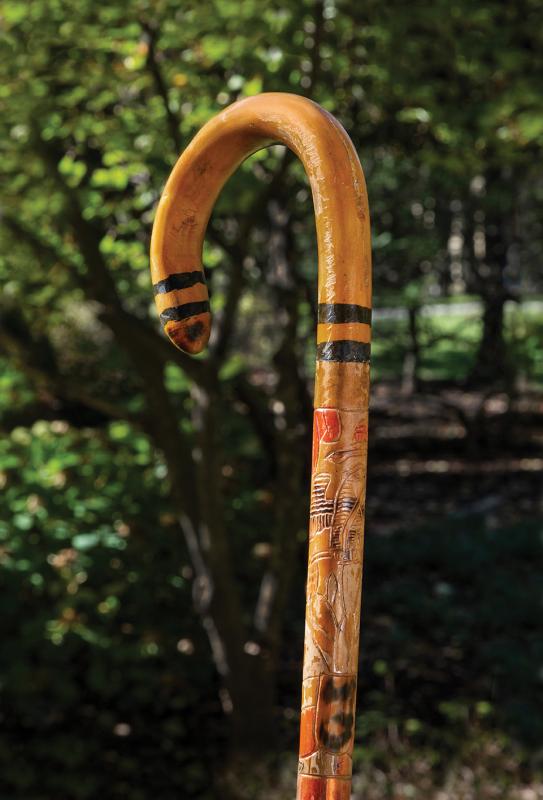Upon Reflection
 As I reflect on the inauguration events that occurred last month, I find myself musing once again on my “ancestors” in the Office of the President at Saint Mary’s. One of these, Sister M. Madeleva Wolff, CSC, was present in my installation ceremony in quiet but important ways.
As I reflect on the inauguration events that occurred last month, I find myself musing once again on my “ancestors” in the Office of the President at Saint Mary’s. One of these, Sister M. Madeleva Wolff, CSC, was present in my installation ceremony in quiet but important ways.
Many colleges and universities have a ceremonial “mace”—an ornamental staff made of metal or wood and adorned with the seal of the college and other symbolic decorations or materials that are meaningful to the institution. The faculty marshal or the president carries the mace in ceremonial processions such as commencement, convocation, or a presidential inauguration. Saint Mary’s College does not have a mace. Instead, recent presidents have chosen one of the walking sticks Sister Madeleva collected in her wide-ranging travels, and the marshal holds up the humble walking stick while leading any formal procession during that president’s tenure. The stick is placed in a holder at the front of the stage with the same decorum as a gold or silver mace encrusted with gemstones.
Over a year ago, I chose a walking stick that originated in Mexico—a small nod to the Mexican and Mexican-American members of my family. But the stick takes on new meaning when I connect it to the “journey” metaphor that permeated my inauguration address. I spoke about two books by British writer Robert Macfarlane, and how one of those books, The Old Ways, engaged with the idea of what we notice when we slow down and travel on foot. Sister Madeleva writes beautifully about how, when she lived in Utah, her hiking sticks “had journeyed miles with me to the tops of all our surrounding mountains and back. They had shared our quest of wildflowers: fritillary, lupine, lungwort, penstemon, cliff rose, columbine. They had shared with us the first call of the meadow lark, the iridescence of the lazuli bunting, the splendor of the western oriole.” Clearly, Sister Madeleva paused and observed with a precise and poetic eye what the landscape had to share.
In the second of the books I mentioned, Underland, Macfarlane explored the caves, tunnels, and secret passages beneath our feet, passages where our human ancestors found shelter or safety or comfort and consciously left evidence that they were here. The most common sign they left was a handprint, an open palm recorded on cave or tunnel walls. We do not know what these ancestors intended for us to understand from this symbol, but Macfarlane ultimately interprets it as “an open-handed encounter across time”—a greeting, a touch, a gesture of connection.
Today, I am thinking about Sister Madeleva’s guiding precept of “the relaxed grasp,” a different kind of open- handedness that she saw as emancipating her from a clutching hold on “friends, pupils, places, things.” She wanted to practice relinquishing “the nonessentials of encumbering humanity,” and she even considered giving up her walking sticks by burning them in the fireplace of the Great Hall in Le Mans! She observed with humility that God seemed to test her relaxed grasp with the deaths of several dear friends. “I am learning to let go,” she wrote, “in deference to Him.”
In my Inauguration remarks, I suggested that every life is a journey, and that at this moment when my journey intersects with the College’s journey, I am particularly aware of the open hands of institutional “ancestors” reaching out to me across generations that bridge more than a century-and-a-half of common enterprise. I am grateful for their “handprints”—their specific achievements, recorded in their own times and preserved in our history and traditions. And I am also grateful for their relaxed grasp, for the loose hold that allows the College to change with the times, as it always has, and that encourages those of us here today to imagine how our efforts—our signifying handprints—might leave the College better than we found it.

Katie Conboy, Ph.D.
President
